
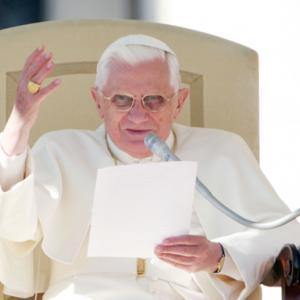
Pope Benedict XVI waves to the crowd in St. Peter’s Square at the Vatican in 2007. RNS photo by Gregory A. Shemitz.
VATICAN CITY — Pope Benedict XVI will be known as “Pope Emeritus” after his retirement on Feb. 28, and will continue to wear white vestments, the Vatican announced on Tuesday.
Ever since Benedict’s surprise announcement that he would become the first pope in 600 years to resign, there had been wide speculation about seemingly small issues, such as what he would be called or whether he would retain the title of “pope.” Such details, however, carry great symbolical value within the tradition-bound Roman Catholic Church.
The Rev. Federico Lombardi, the Vatican’s chief spokesman, told reporters that Benedict will continue to be called “His Holiness” and that his title will be “Pope Emeritus” or “Emeritus Roman Pontiff.”
He said Benedict had decided the issue himself, after consultations with experts.
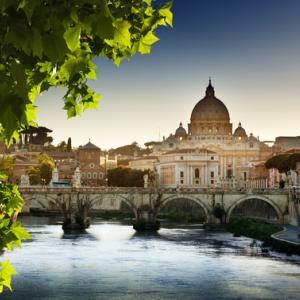
View of St. Peter's Basilica, Iakov Kalinin/ Shutterstock.com
If you want a crash course on how papal politics really works, look no further than the saga of Scottish Cardinal Keith O’Brien.
On Friday, Britain’s most senior Catholic cleric grabbed headlines by telling the BBC that priestly celibacy was “not of divine origin” and that he’d be “happy” if priests had the option to marry.
On Saturday, O’Brien was back in the news, this time after four men reportedly accused him of “inappropriate acts” dating back to the 1980s.
By Monday, O’Brien had resigned as archbishop of Saint Andrews and Edinburgh and announced he would skip the conclave.
From champion of married priests to disgraced churchman within 72 hours, O’Brien’s trajectory is stunning but also emblematic of the frenetic and fever-pitched campaigning that occurs during the tiny window between a pope’s death or resignation and the election of his successor.
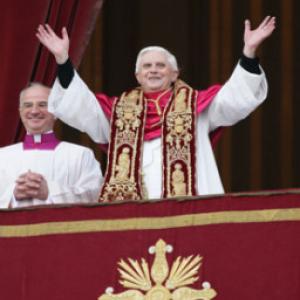
Pope Benedict XVI in 2005. RNS photo by Grzegorz Galazka.
VATICAN CITY — The Vatican on Wednesday confirmed that Pope Benedict XVI is considering changes to church law regulating the election of a new pope, but stopped short of saying whether voting could start earlier than currently planned.
Pope John Paul II’s 1996 Apostolic Constitution “Universi Dominici Gregis” regulates what happens between the death or resignation of a pope and the election of his successor.
It stipulates that the conclave of cardinals must begin 15 to 20 days after the end of the previous pontificate.
But after Benedict’s surprise announcement that he will resign on Feb. 28, several voices within the church have asked for an earlier start to the voting to shorten the time the Catholic Church is left without a leader.
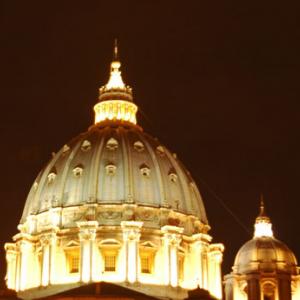
The dome of St. Peter’s Basilica, Vatican City. Photo by Rene Shaw.
VATICAN CITY — As of 8 p.m. on Feb. 28, Pope Benedict XVI will no longer be pope and the Vatican will go into “sede vacante” mode — a Latin expression that means that the seat of St. Peter is vacant.
So who’s in charge until a new pope is chosen? The “interregnum” between two popes is governed by ancient rituals and by institutions half forgotten even within the Vatican.
But it is also the only time that the Catholic Church comes close to vaguely resembling a democracy, with the College of Cardinals acting somewhat like a Parliament with limited powers as it prepares to choose the new pontiff in a closed-doors conclave.
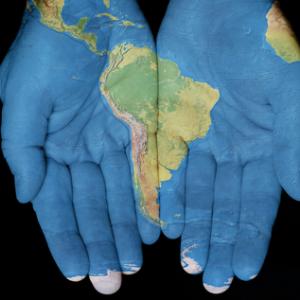
Map painted on hands, Jim Vallee / Shutterstock.com
As the 117 Roman Catholic cardinals walk into the Sistine Chapel next month for the election of a new pope, one hopes that they fully recognize the unfolding, dramatic pilgrimage of world Christianity: The demographic center of Christian faith has moved decisively to the Global South.
Over the past century, this astonishing demographic shift is the most dramatic geographical change that has happened in 2,000 years of Christian history. Trends in the Catholic Church — comprising about 1 out of 2 Christians in the world — have generally followed this global pattern:
- In 1900, about 2 million of the world’s Catholic faithful lived in Africa; by 2010, this had grown to 177 million.
- 11 million Catholics were found in Asia in 1900; by 2010 there were 137 million Asian Catholics.
- Through colonial expansion, 59 million Catholics populated Latin America and the Caribbean in 1900; but by 2010, that number had grown to 483 million.
- In 1900, two-thirds of the world’s Catholic believers were in Europe and North America; today, two-thirds are in Latin America, Africa, and Asia.
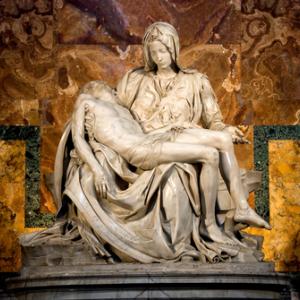
Michaelangelo's Pieta in St. Peter's Basilica, javi_indy / Shutterstock.com
For the first time in six centuries, the head of the Catholic Church is stepping down. Some, like Huffington Post Religion’s Senior Editor Paul Raushenbush, have suggested this is an indication that the stodgy religious institution is creeping its way toward modernism. Could it be that the role of Pope will be considered to be that more like a CEO than a sovereign ruler? Is there room within today’s church for its leadership to step down when they feel they can no longer adequately fill the tremendous demands heaped upon them?
Can Popes retire? And if so, do they have to give up those cool red shoes?
So if, indeed, the Catholic Church is moving in a new direction, why not consider a more thorough overhaul? Some have suggested that the next Pope should come from the southern hemisphere, given that this is where the faith is growing the most (actually, it’s not really growing much at all in the northern half of the world). But as some have suggested within the church, the process of selecting a Pope is not necessarily driven by creating a representative leadership.
That said, it seems a rare opportunity to do something exciting. I, like many people, assumed that the successor to Pope Benedict would have to come from within the College of Cardinals. But though this has been tradition for most of the life of the Church, Pope Clement V is a rare exception. He was plucked from a monastery to become Pope, with the hope of overcoming much of the perceived corruption within the College.
And though the College of Cardinals is not explicitly mired in scandal at the moment, the Church itself certainly has suffered some blows in the court of public opinion, as well as in the court of law, in some cases. So given that precedent, perhaps it’s time for another radical departure from tradition, one that will signal to the world that the Church is more committed than ever before to its mandate to care for the poor, and support the marginalized.
Not all Catholics appreciated Pope Benedict XVI’s staunch defense of Christian orthodoxy, traditional marriage, and life from conception to natural death. But American evangelicals sure did.
As word spread on Monday of Benedict’s resignation, many evangelicals lamented the impending loss of a powerful spokesman for their conservative causes.
“Pope Benedict XVI has exemplified moral courage and an unwavering commitment to the Gospel message,” said Ralph Reed, chairman of the Faith & Freedom Coalition, a conservative Christian political group.
“We honor him for his lifelong service to the Lord and his inestimable intellectual contribution to Christian orthodoxy.”
The high praise — “evangelical Benedictions,” you might say — extended beyond U.S. borders as well.
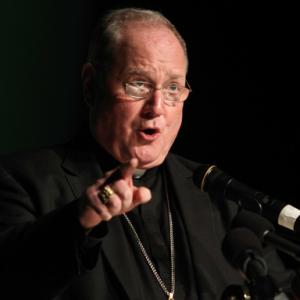
Cardinal Timothy Dolan, RNS photo by Gregory A. Shemitz.
NEW YORK — Walk the streets of Manhattan, especially around St. Patrick’s Cathedral, and ask passersby about Cardinal Timothy Dolan and two things stand out: one, they know who you’re talking about, and two, they like him. Often love him.
Both responses are unusual in the U.S. today: generally, Catholic churchmen are either interchangeable faces to the public, or, if they are known, it’s because of an unflattering headline.
Now Dolan’s extraordinary visibility and popularity are being cited as factors that could make him the first American with a realistic shot at being elected pope when the College of Cardinals gathers in March to elect a successor to Benedict XVI.
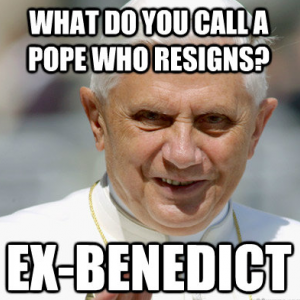
Ex-Benedict memes have gone viral.
With the Pope's unexpected resignation, and consequent endless "Ex-Benedict" memes, millions have taken to the Internet to voice their opinions on who will become next at the top of the Catholic hierarchy.
Here are some of the standouts.
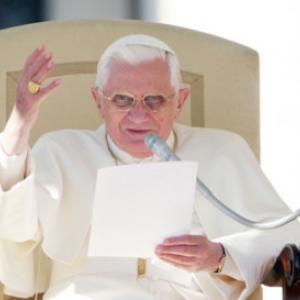
Pope Benedict XVI in 2007. RNS photo by Gregory A. Shemitz.
Pope Benedict XVI came into office with the reputation of a conservative hardliner, a vigorous defender of orthodoxy who wanted to restore Tradition — yes, with a capital “T” — to a church that was seen as disturbingly undisciplined.
Yet with the stunning announcement that he is resigning as the 264th successor to Saint Peter, Benedict may wind up fundamentally changing the way the church and the world view the papacy.
That’s because the papacy has come to represent more than an office, and the pope more than just a higher-ranking priest or bishop who enjoys lifetime tenure, a nice Vatican apartment, and the privilege of wearing a white cassock no matter the season.
Instead, the papacy is seen as a divine mission unlike any other in the church, and one that ends only in death.
“Christ did not come down from the cross,” the late John Paul II, Benedict’s immediate predecessor, would tell aides who wondered if his failing health and public suffering should compel him to relinquish his office.
A man is elected pope by the cardinals, yes, but at the behest of the Holy Spirit, according to Catholic theology. He takes a new name, and can’t even go home to collect his things: He moves into the Vatican right away, inhabiting a new identity in a new position — so superior that canon law says a pope can resign, but says he cannot resign to anyone.

St. Peter's Basilica Dome, David Carillet/ Shutterstock.com
Pope Benedict XVI’s sudden announcement that he would resign by the end of the month took the church and the world by surprise, in large part because it was a move without precedent in the modern world.
But what comes next is as old and familiar as the papacy itself: Speculating about who will succeed to the Throne of St. Peter.
Indeed, within months of Benedict’s own election in 2005, church insiders and online oddsmakers were trying to figure out who might be next, given that Benedict — now 85 — was already aging, increasingly frail, and had himself declared that he did not expect his reign to be a long one.
So what will happen when the world’s cardinals gather before the splendor of Michelangelo’s Last Judgment fresco in the Sistine Chapel to elect a new pope? Who are the “papabile,” as the Italians say, the “pope-able” cardinals?
Will the conclave make the epochal break with the European monopoly and pick a cardinal from Latin America or Africa? The Catholic Church is booming in the Southern Hemisphere, as opposed to Europe and North America, where it is on life-support or barely treading water.
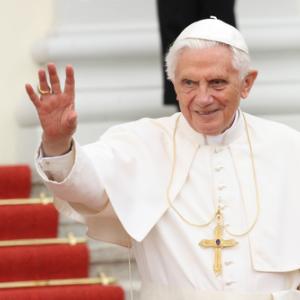
Reception of Pope Benedict XVI at Schloss Bellevue on September 22, 2012 in Berlin, Germany. vipflash / Shutterstock.com
VATICAN CITY — Pope Benedict XVI will soon become the first pope to resign since 1415, short-circuiting many of the initial stages of electing a new pope. But the Vatican says the transition to a new papacy shouldn’t be all that different from normal.
Of course, the traditional rituals associated with confirming the death of a pope and planning his funeral will not be necessary. But the process outlined below, rife with secrecy and tradition, will largely follow centuries-old protocol.

White smoke at the Vatican in 2005, signaling the election of Cardinal Ratzinger. Andreas SOLARO/AFP/Getty Images
Following is a brief explanation of the process used in a conclave to elect a new pope.
Q: Who governs the church until a new pope is elected?
A: Day-to-day operations are handled by the Vatican curia, the central bureaucracy. All prelates who head Vatican agencies resign after the death or resignation of a pope. Provisions are made to oversee the papal household, the spiritual needs of Romans and to grant absolutions.
Q: What does the word “conclave” mean?
A: The word comes from the Latin, “with a key,” referring to the tradition of locking the doors until cardinals elect a winner.
Q: Who is eligible to be elected pope?
A: Technically, any baptized male Catholic is eligible, provided he is not married and in good standing with the church. Since 1378, however, new popes have come from within the College of Cardinals.

Pope Benedict XVI leaving after delivering his traditional Christmas 'Urbi et Orbi' blessing. VINCENZO PINTO/AFP/Getty Images
After nearly eight years since being named to the chair of Peter, Pope Benedict XVI announced this morning that he is resigning at the end of February.
" ... in today’s world, subject to so many rapid changes and shaken by questions of deep relevance for the life of faith, in order to govern the bark of Saint Peter and proclaim the Gospel, both strength of mind and body are necessary, strength which in the last few months, has deteriorated in me to the extent that I have had to recognize my incapacity to adequately fulfill the ministry entrusted to me. For this reason, and well aware of the seriousness of this act, with full freedom I declare that I renounce the ministry of Bishop of Rome, Successor of Saint Peter, entrusted to me by the Cardinals on 19 April 2005, in such a way, that as from 28 February 2013, at 20:00 hours, the See of Rome, the See of Saint Peter, will be vacant and a Conclave to elect the new Supreme Pontiff will have to be convoked by those whose competence it is."
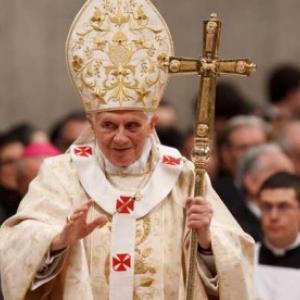
Pope Benedict XVI leaves Christmas Eve Mass in St. Peter’s Basilica. RNS photo courtesy Paul Haring/Catholic News Service
VATICAN CITY — In a move that took the world by surprise, Pope Benedict XVI announced on Monday that he will become the first pope in 600 years to resign, with plans to step down on Feb. 28.
“After having repeatedly examined my conscience before God, I have come to the certainty that my strengths, due to an advanced age, are no longer suited to an adequate exercise of the Petrine ministry,” Benedict told cardinals as they gathered in Rome for the proclamation of new saints.
Vatican spokesman Rev. Federico Lombardi said preparations for the conclave that will elect Benedict’s successor are in the early stages.
A papal election could be expected “within 10 to 15 days,” he said. “We should have a new pope by Easter.”
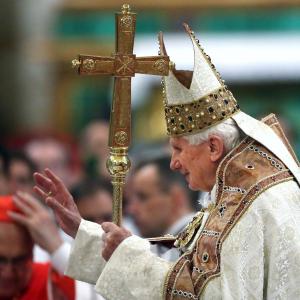
Pope Benedict XVI at a January Vespers service. Franco Origlia/Getty Images
Pope Benedict XVI announced today he will step down on Feb. 28, citing his advanced age. The head of the Catholic Church is 85 years old. Below is the text of his announcement.
Dear Brothers,
I have convoked you to this Consistory, not only for the three canonizations, but also to communicate to you a decision of great importance for the life of the Church. After having repeatedly examined my conscience before God, I have come to the certainty that my strengths, due to an advanced age, are no longer suited to an adequate exercise of the Petrine ministry. I am well aware that this ministry, due to its essential spiritual nature, must be carried out not only with words and deeds, but no less with prayer and suffering. However, in today's world, subject to so many rapid changes and shaken by questions of deep relevance for the life of faith, in order to govern the bark of Saint Peter and proclaim the Gospel, both strength of mind and body are necessary, strength which in the last few months, has deteriorated in me to the extent that I have had to recognize my incapacity to adequately fulfill the ministry entrusted to me. For this reason, and well aware of the seriousness of this act, with full freedom I declare that I renounce the ministry of Bishop of Rome, Successor of Saint Peter, entrusted to me by the Cardinals on 19 April 2005, in such a way, that as from 28 February 2013, at 20:00 hours, the See of Rome, the See of Saint Peter, will be vacant and a Conclave to elect the new Supreme Pontiff will have to be convoked by those whose competence it is.
Dear Brothers, I thank you most sincerely for all the love and work with which you have supported me in my ministry and I ask pardon for all my defects. And now, let us entrust the Holy Church to the care of Our Supreme Pastor, Our Lord Jesus Christ, and implore his holy Mother Mary, so that she may assist the Cardinal Fathers with her maternal solicitude, in electing a new Supreme Pontiff. With regard to myself, I wish to also devotedly serve the Holy Church of God in the future through a life dedicated to prayer.